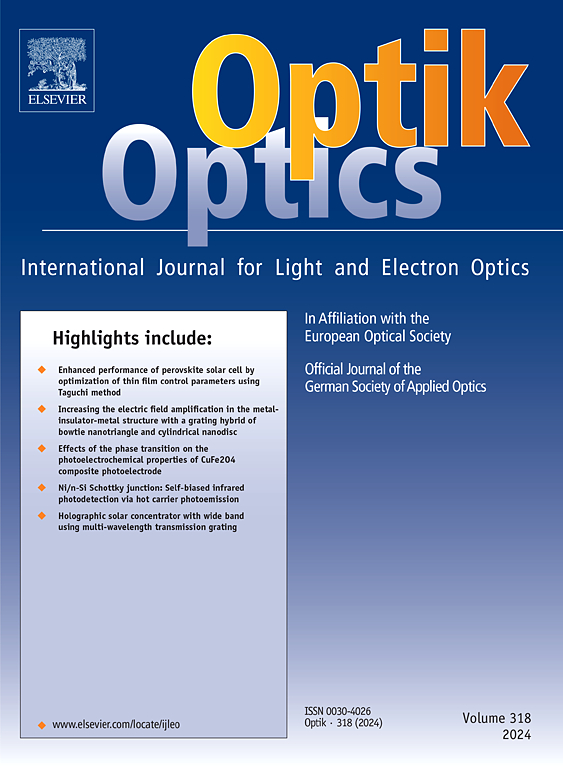采用菲涅尔透镜光学技术的低聚光太阳能电池输出功率分析
IF 3.1
3区 物理与天体物理
Q2 Engineering
引用次数: 0
摘要
在这项工作中,我们介绍了一种与简单的单轴太阳能跟踪系统配合使用的 П 形 LCPV。我们在 COMSOL Multiphysics 上对П形 LCPV 进行了仿真,并利用 XGBoost 回归、线性回归、支持向量回归、决策树回归和随机森林回归等回归方法预测了不同入射角下的光学效率,对 LCPV 的输出功率进行了建模并与其他光伏和 LCPV 系统进行了比较。其中最有效的是 XGBoost 回归法,准确率为 91.23931%。П形 LCPV 每天产生的能量是固定的九块太阳能电池板的 2.2 倍。使用九个太阳能电池和设计的光学系统,可以使系统在更宽的入射角下良好运行,使用单轴太阳能跟踪系统,每天只需旋转系统 4 次。与普通的菲涅尔透镜式 LCPV 相比,П形 LCPV 的复杂性更低,成本更低。本文章由计算机程序翻译,如有差异,请以英文原文为准。
Output power analysis of low concentrated solar cells with fresnel lens optics
In this work, we introduce a П-shaped LCPV which works with a simple single-axis solar tracking system. The simulation of the П-shaped LCPV was made on COMSOL Multiphysics and output power of the LCPV was modeled and compared with other PV, LCPV systems using predicted optical efficiency at different incidence angles by regression methods such as XGBoost regression, Linear Regression, Support Vector Regression, Decision Tree Regression, Random Forest Regression. The most effective one was XGBoost regression with accuracy of 91.23931 %. The П-shaped LCPV generates 2.2 times more energy than the fixed nine-solar cell panel per a day. Using nine solar cells and the designed optics allows the system to operate well at wider incidence angles using a single-axis solar tracking system which rotates the system only 4 times a day. The П-shaped LCPV is less complex and cheaper than an ordinary Fresnel lens-based LCPV.
求助全文
通过发布文献求助,成功后即可免费获取论文全文。
去求助
来源期刊

Optik
物理-光学
CiteScore
6.90
自引率
12.90%
发文量
1471
审稿时长
46 days
期刊介绍:
Optik publishes articles on all subjects related to light and electron optics and offers a survey on the state of research and technical development within the following fields:
Optics:
-Optics design, geometrical and beam optics, wave optics-
Optical and micro-optical components, diffractive optics, devices and systems-
Photoelectric and optoelectronic devices-
Optical properties of materials, nonlinear optics, wave propagation and transmission in homogeneous and inhomogeneous materials-
Information optics, image formation and processing, holographic techniques, microscopes and spectrometer techniques, and image analysis-
Optical testing and measuring techniques-
Optical communication and computing-
Physiological optics-
As well as other related topics.
 求助内容:
求助内容: 应助结果提醒方式:
应助结果提醒方式:


